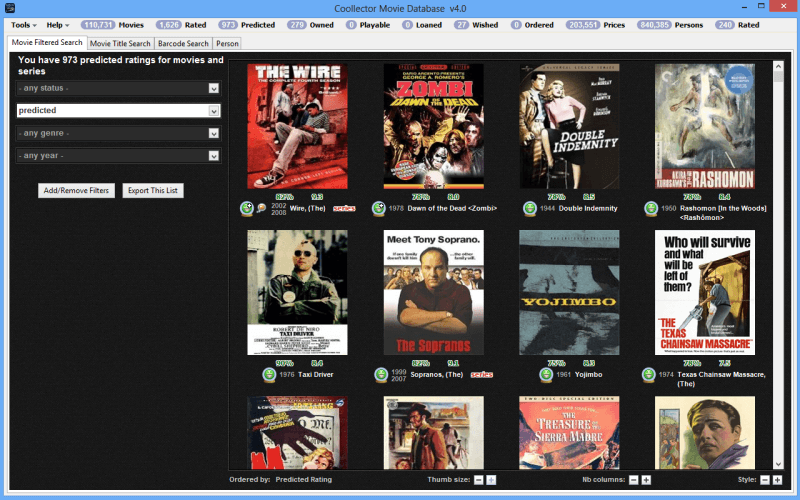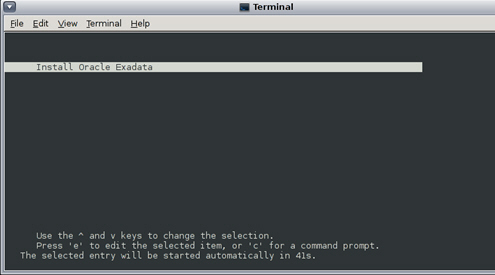Db: 4.11:drivers For Mac
✅️ Movie Database ✅️ Recommendations ✅️ Collection Organizer ✅️ Netflix Catalog Catalog your DVD collection. Inventory your movie files. Rate everything you watch and get personalized recommendations matching your tastes. Easily decide what to watch on TV, in theaters, on Netflix. Discover great movies and series that you would have missed otherwise. Coollector Movie Database is a FREE Mac/Windows software. No crippled feature or time limit.
There's only a 30 seconds window on startup that you can remove by becoming a contributor. Coollector Movie Database is a welcome alternative to decide what to watch on Netflix. The recommendations are accurate and unbiased, and it's much easier to browse or filter the whole Netflix catalog (the app knows the catalogs from 30+ countries, updated daily).
Netflix is a great service, offering lots of shows for a low price, but their user interface has gone downhill. Many shows are buried and nearly impossible to find, their recommendation system is blatantly biased toward their Netflix Originals, you can only thumb up or thumb down a show, the percent match scores are all wrong, you can't mark a show as 'not interested', you're recommended shows you've already seen, and the auto-playing previews can be quite intrusive. Coollector Movie Database is the only program of its kind! It's a personalized film database and at the same time a video collection organizer. All the alternative softwares are simply video collection organizers, where you start with an empty database, and must download information for each video, one by one. With Coollector Movie Database, it's completely different.
Right from the start, you have an entire encyclopedia with nearly all the movies and series that exist. Since it's installed on your computer, you can use it even when you're offline. The interface is very easy to use, and richly illustrated with film posters, video covers, photographs of actors and crew, and even character screenshots. You can customize the layout to your liking, and make almost any search you can think of, without needing to be a database engineer. The best part is that you can personalize that movie database.
You can rate a film to remember whether it was good or bad. You can track which part of a series you've already seen, by rating whole seasons or individual episodes. You can tag the movies and the persons with any words you want. You can organize your video collection, remembering what you own, where it's stored, or what you've loaned to whom. You can create a wish-list with all the movies that you'd like to watch. All those personalizations are clearly visible: movies that you own are highlighted, and colored icons will instantly remind you of how much you like a movie or a person.

Movie lovers will get enough hints to decide what to watch from their own collection, on TV, in theaters, or on streaming services like Netflix, Amazon and Hulu. Does the movie have actors whom you like? Have you seen other movies from this director?
At first glance you'll have all the answers! To help you even further in your choice, the app displays the IMDb rating and popularity of each movie along with a link to trailers on Youtube. Last but not least, the personalized movie recommendations are an instant way to know how much you'll like the movies that you haven't seen yet. Video collectors will easily catalog their entire DVD collection as well as organize their movie files by scanning their disk very quickly and identifying the files automatically.
Db 11 Cost
Once added, you'll be able to launch the files from within the app and they'll be played with your favorite media player. Finally, if you want to expand your DVD collection at the best price without missing a bargain, a database of existing videos with daily updated prices is included. This makes it possible to do things such as, for example, list all the 4K Blu-Ray discs available for the movies from your wishlist, starting from the least expensive one, down to the most expensive.
Restoring a database is a piece of cake with SQL Operations Studio. It’s a similar process to doing it with.
Simply click Restore and follow the prompts. This restore process allows you to navigate through the computer’s file system to locate the.bak file. This.bak file contains a backup of the database you want to restore. So when SQL Server restores the database, it’s using the.bak file to do so.
However, if you’re running your SQL Server instance inside a Docker container (which of course, you would be if you’re running SQL Server on Mac or Linux), there’s something you need to be aware of if your backup file is located outside the Docker container. If the backup file is located outside the Docker container that’s running SQL Server, you’ll need to copy it into the Docker container before you do the restore. Once you’ve copied the.bak file into the Docker container, you can go ahead and use SQLOPS to restore the database. Below I outline all the steps involved.
Update Drivers For Mac


This tutorial assumes that you’ve, and you’ve. I should point out that, even though the examples on this page were done on a Mac, all steps should work on both macOS and Linux. Download a Sample Database If you already have your own database.bak file, you don’t need to do this step. For this tutorial, I’m going to restore the WideWorldImporters sample database.
This is a sample database that Microsoft has made available for showing off the various features of SQL Server. In particular, I’ll be using the data warehousing version of the database. To download the WideWorldImporters sample database.bak file, either go to the and find the download link, or you can download the.bak file directly here:. 47.7mb Copy the.bak file to the Docker Container You’ll only need to do this step if your.bak file is located outside the Docker container (which it will be if you just downloaded the WideWorldImporters.bak file). First, let’s create a folder inside the Docker container: sudo docker exec -it sqlserverdemo mkdir /var/opt/mssql/backup Now copy the database.bak file into that folder: sudo docker cp WideWorldImportersDW-Full.bak sqlserverdemo:/var/opt/mssql/backup This command assumes you’re in the same directory as the.bak file. If not, either change into the directory first using. For example: cd Downloads or whatever folder it’s in. Why do we need to Copy the.bak File?
The Docker container has its own file system, and it lives kind of independently of your Mac’s file system. So when you try to navigate to the.bak file in SQLOPS (in the next step), you’ll find yourself “stuck” inside the Docker container’s file system, with no way of accessing the.bak file on your Mac’s file system. Therefore, we copy the.bak file to the container’s file system first, then we can access it via SQLOPS. Restore the Database OK, now we can do the actual database restore process.
The following steps assume you’ve already got SQL Operations Studio running, and you’ve already connected to SQL Server. From the Server Dashboard, click the Restore button. At the Restore from heading, select Backup file from the dropdown menu. At the Backup file path heading, click the ellipses ( ). Navigate to the folder, select the.bak file and click OK.
Click Restore. The restore might take a minute or two.
The Task History will indicate when it’s ready The database has now been restored. Check the Database You’ll probably want to check that the database has in fact been restored. One way of doing this is to navigate to the database and run a quick query. Click on the Servers icon (top left of the screen).
The database should now be listed under the Databases heading for the applicable server. If not, right click Databases and select Refresh. Use the SQLOPS interface to run a query against the database. For example, right-click on the Tables node (after expanding the database) and click Select Top 1000. This automatically runs a query against that table, selecting only the top 1000 results.